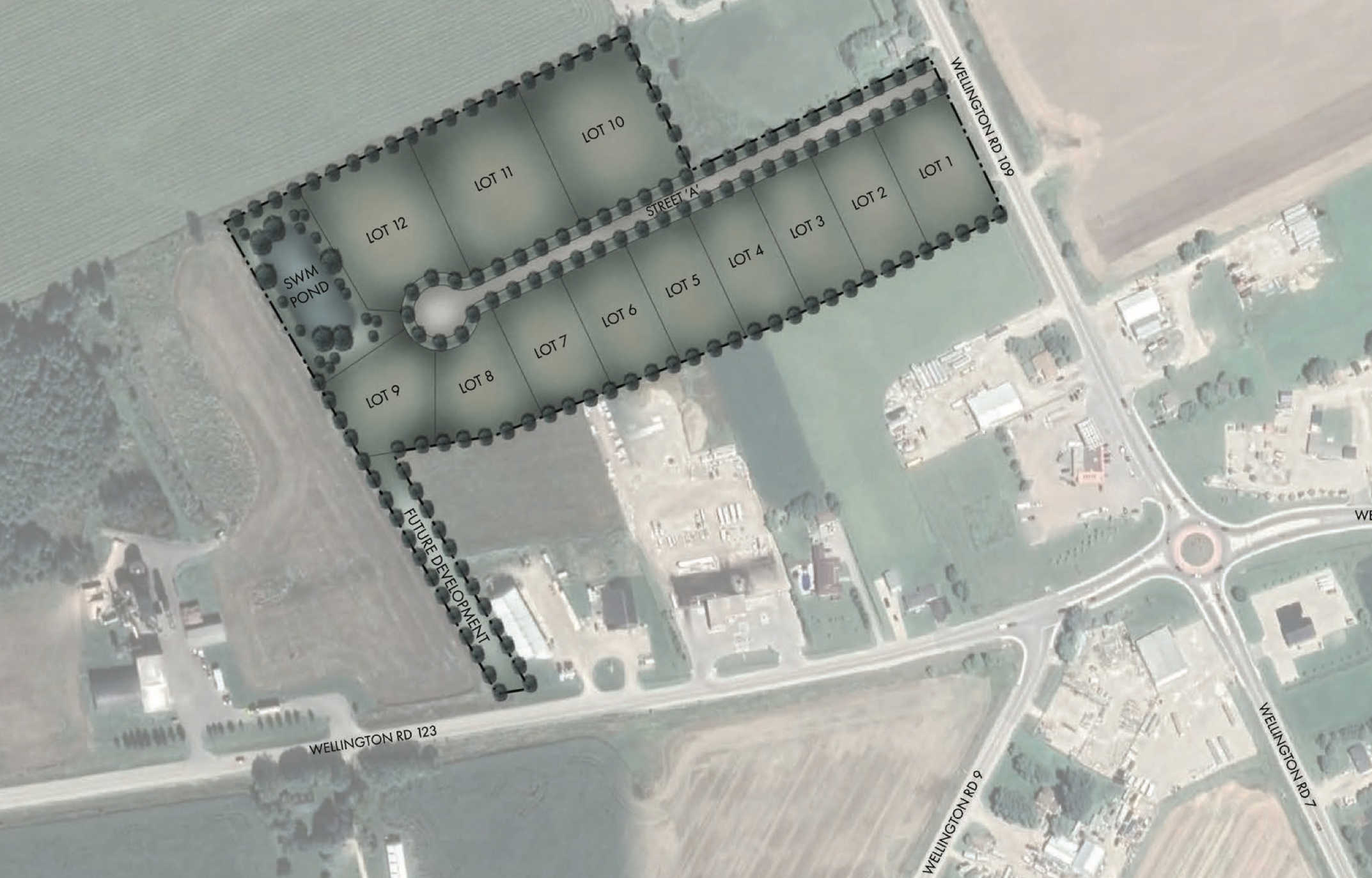MINTO – A draft plan for a proposed industrial subdivision in Teviotdale was presented to council during a Dec. 17 public meeting.
The proposal, located at 6739 Wellington Road 109, includes 12 industrial lots, a future development block, a municipal stormwater management pond and municipal road.
The property is 8.26 hectares (20.4 acres) in size and is currently in agricultural production. Surrounding buildings include a residence and the OPP station to the north of the property, and industrial, commercial and residential uses to the south.
A zoning bylaw amendment seeks to rezone the land from agricultural site specific to rural industrial site specific.
The land has “been designated for a number of years as a hamlet,” explained MHBC partner Pierre Chauvin, on behalf of owner Doug Taylor. “The hamlet designation does permit to a broad range of industrial and rural type uses.”
The proposed public road in the development is set to connect to Wellington Road 109 and be widened to a 23-metre industrial road, which is wider than the “typical 20m,” added Chauvin.
The 12 lots all exceed the minimum one-acre size, ranging from one to two acres.
“We wanted some variety to provide to the market,” stated Chauvin. “If they (buyers) have different needs they have the ability to purchase different size lots.”
Municipal studies
A noise study completed last March recommended that “because of the sensitive land uses, in particular the home that’s fronting onto [Wellington Road] 109 … we’ve implemented certain restrictions in the range of uses for those lots that are closest,” Chauvin told council.
Other completed studies include:
- a planning justification report in August;
- preliminary stormwater management report, June 2023;
- preliminary septic design report, September 2024;
- transportation brief, July 2023; and
- stage one and two archaeological assessment, June 2023.
Further noise studies are recommended by the site plan when “an actual building and use is put forward,” stated Chauvin.
The proposed lots are to be serviced by individual water supply wells and individual septic systems, which has been deemed “achievable” through a functional site servicing report.
A transportation brief is being reviewed by county staff in terms of the impacts on Wellington Road 109, Chauvin said.
Construction is expected to generate 68 trips in each of the weekday morning and afternoon peak hours, stated the brief.
According to an industrial transportation report, the expected traffic volumes generated by the development are not high enough to require a full transportation impact study.
Resident concerns
Judy Wass is a neighbouring landowner who has lived on Wellington Road 109 for 32 years.
She has an OPP station on one side of her property and now, possibly, a variety of industrial lots on the other.
“I’m not sure I would have purchased my home if I thought at one point I might be living next to industrial [buildings],” said Wass.
She expressed concerns about her property value and the idea of reselling her home.
Chauvin replied, “What you do is try to mitigate the impacts and that’s exactly what we are trying to do here with this type of use.”
“When something hasn’t been built yet it’s hard to do a study on that particular thing,” said Wass, referring to the completed noise study, as noise levels was another concern.
She suggested the developer build a berm to mitigate noise and enhance aesthetics.
“Would you entertain putting in a berm at the edge of your property to support Judy’s concerns?” councillor Ron Elliott asked Chauvin.
“The short answer is yes; I think we need to look at the design,” replied Chauvin.
The backside of Wass’ property has enough room for a berm to be provided, he added.
“Not sure how high we’re talking about … but if it’s strictly for landscaping and putting some trees on there; I don’t think that would be an issue from our perspective,” stated Chauvin.
“I was concerned about the loss of agricultural land,” stated Wass.
“We are consistently taking up agricultural land for industrial and it just seems that the green spaces [are] kind of going by the wayside.”
Terry Kuipers, Minto’s director of building and planning services, replied, “This land has been a hamlet industrial designation for as long as I’ve been here, so it wouldn’t be included within Ontario’s agricultural land base calculation.”
Council received the report for information.



